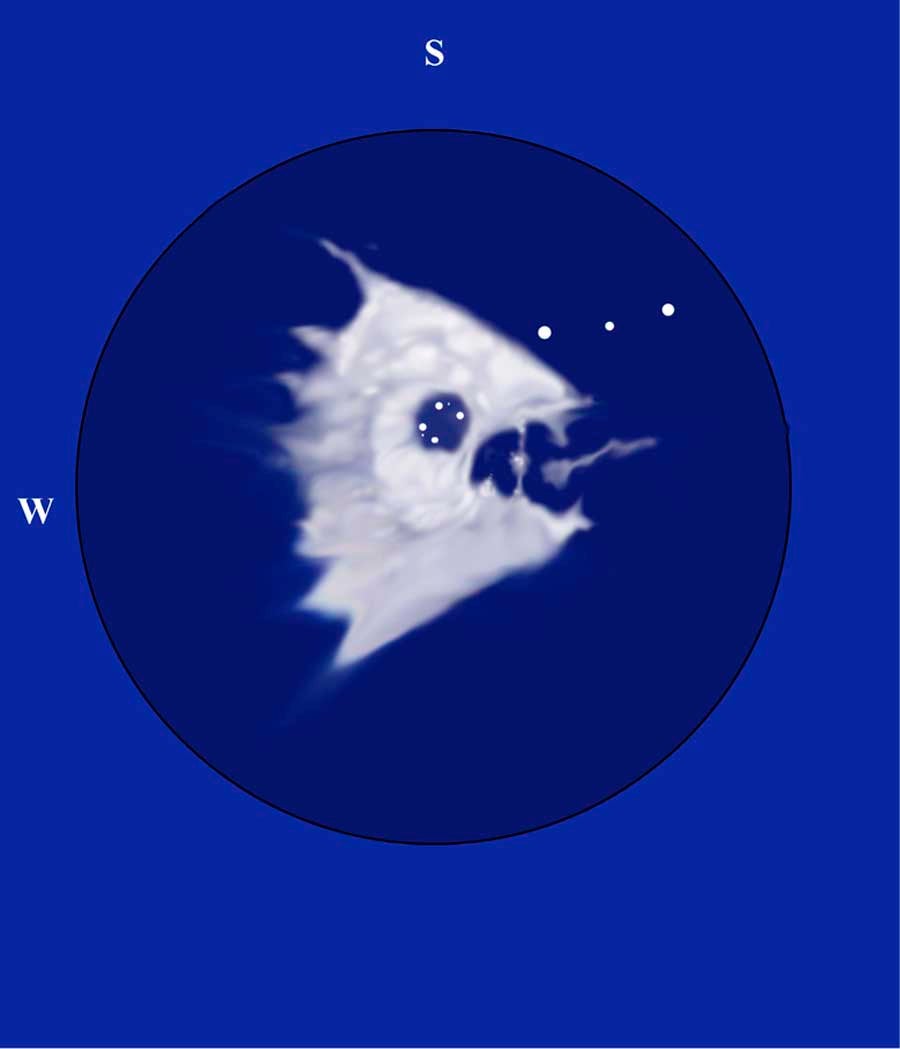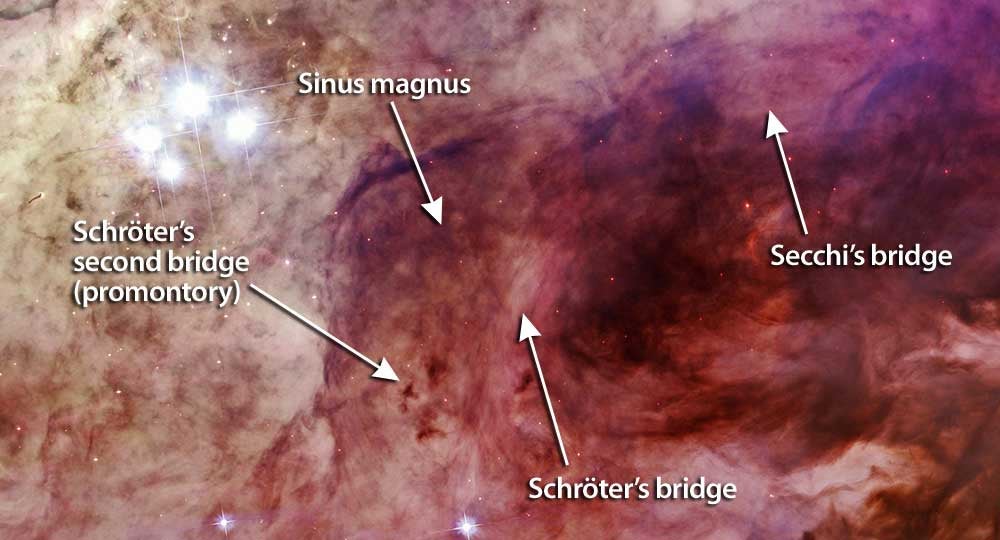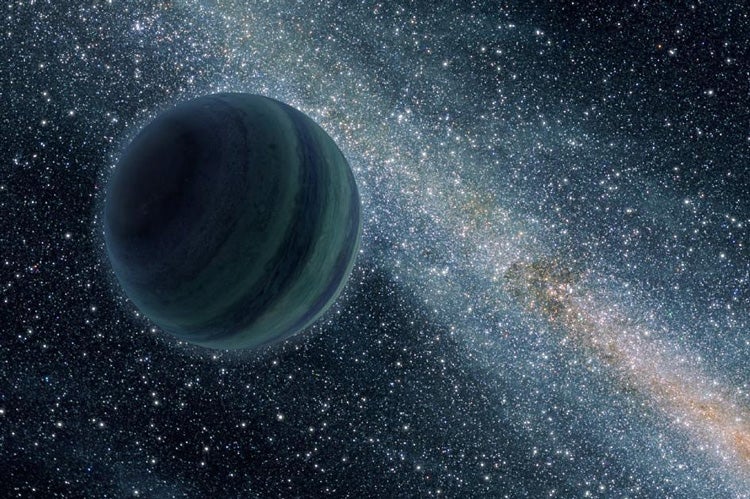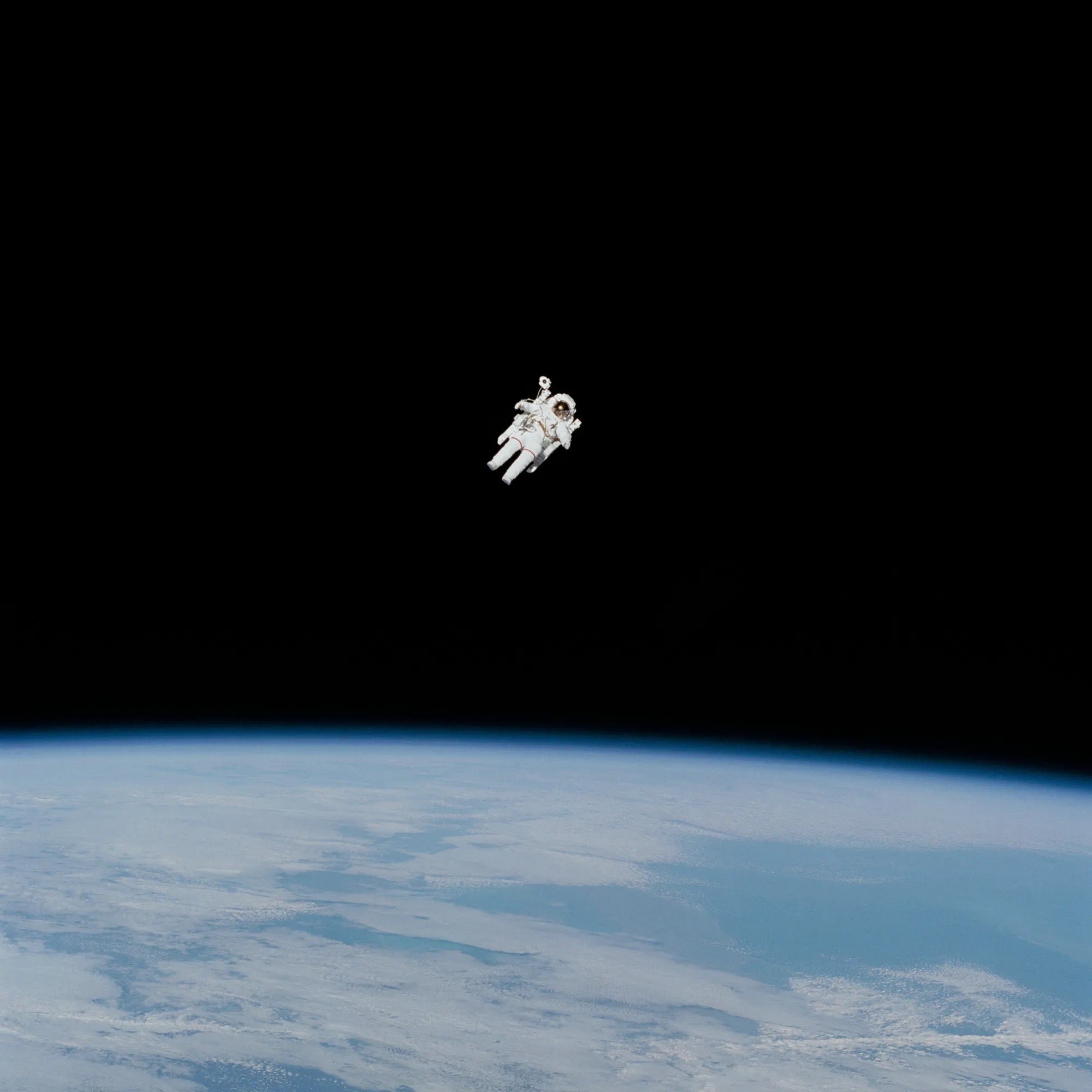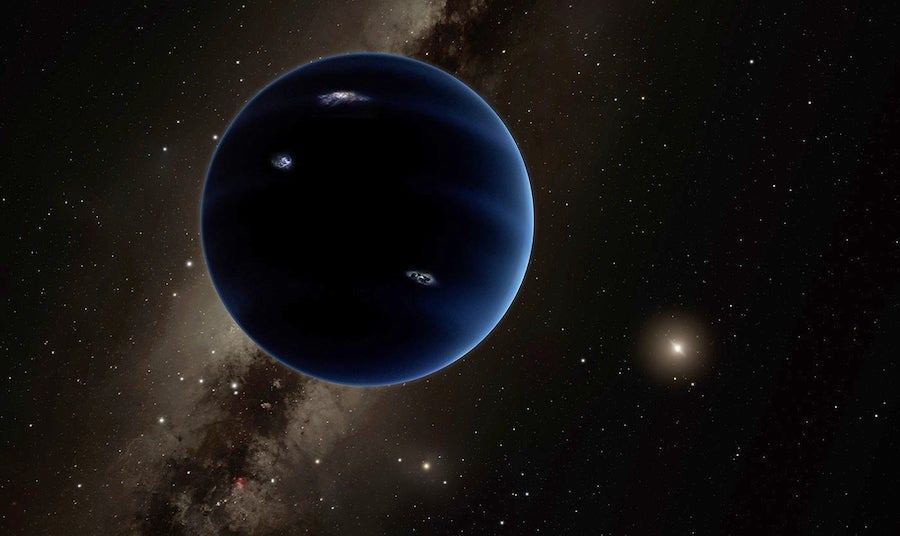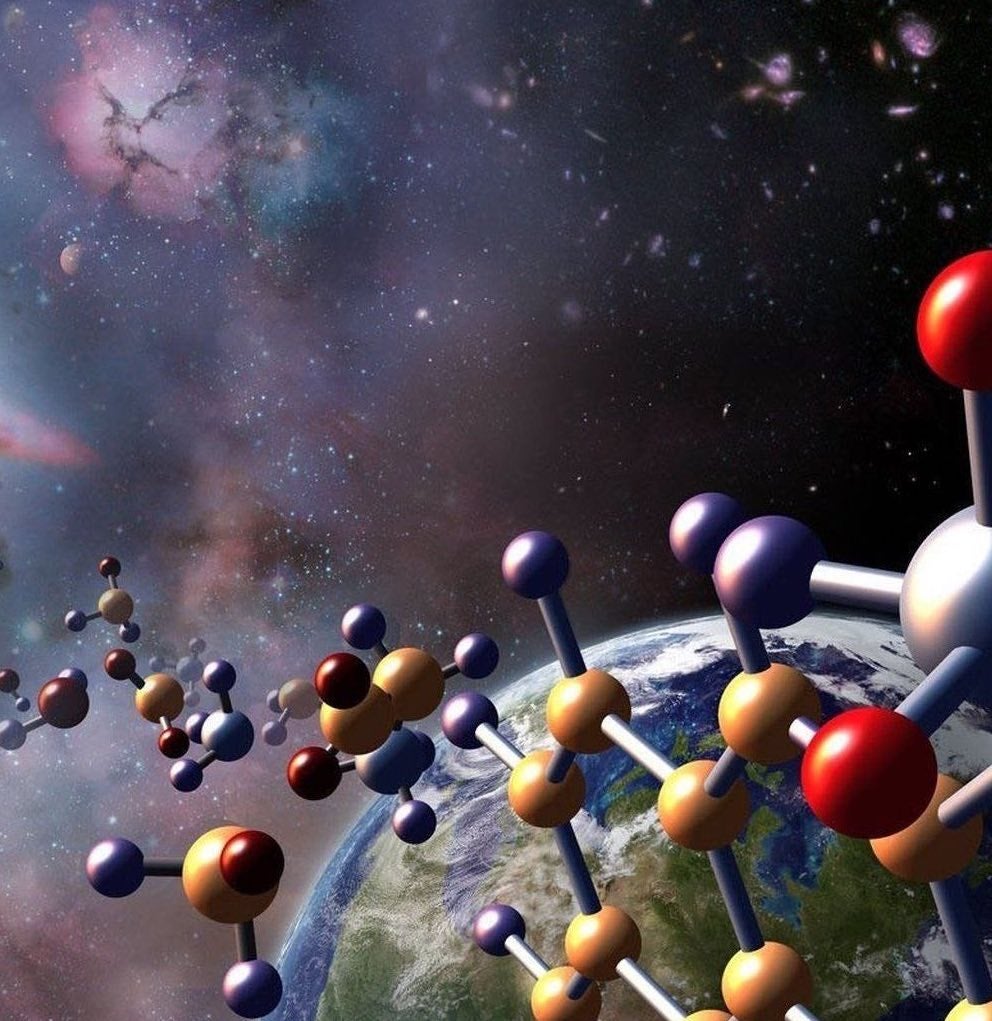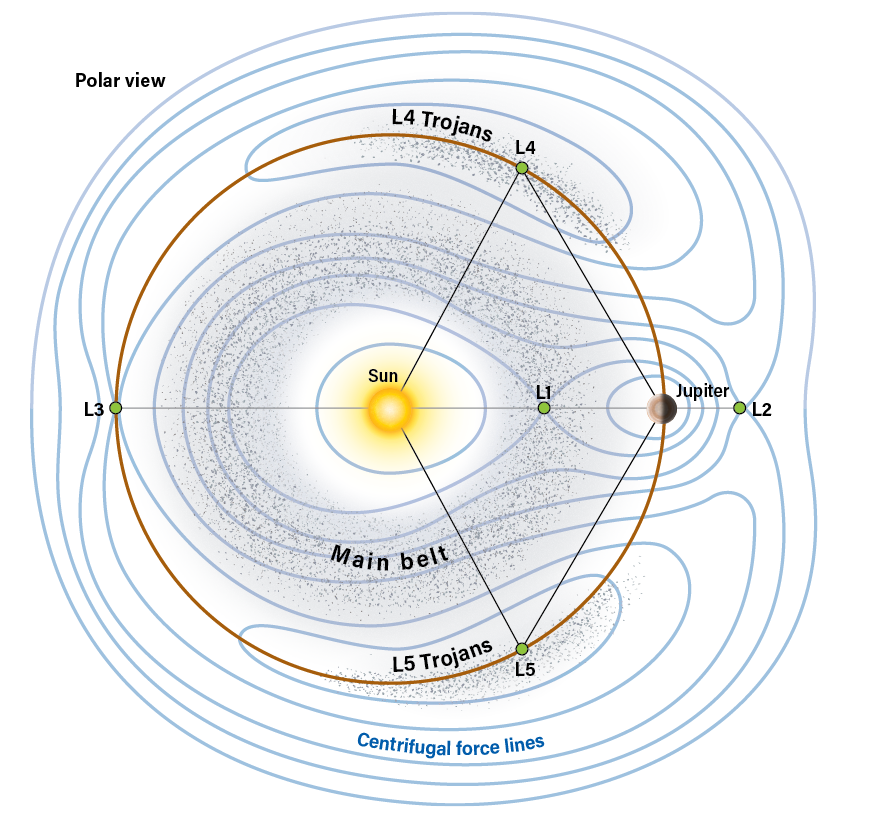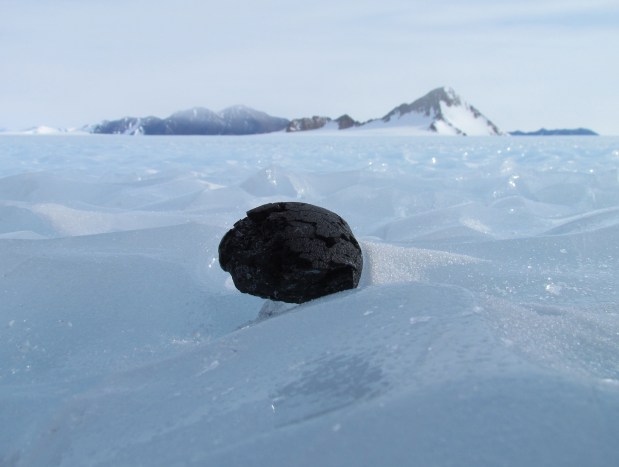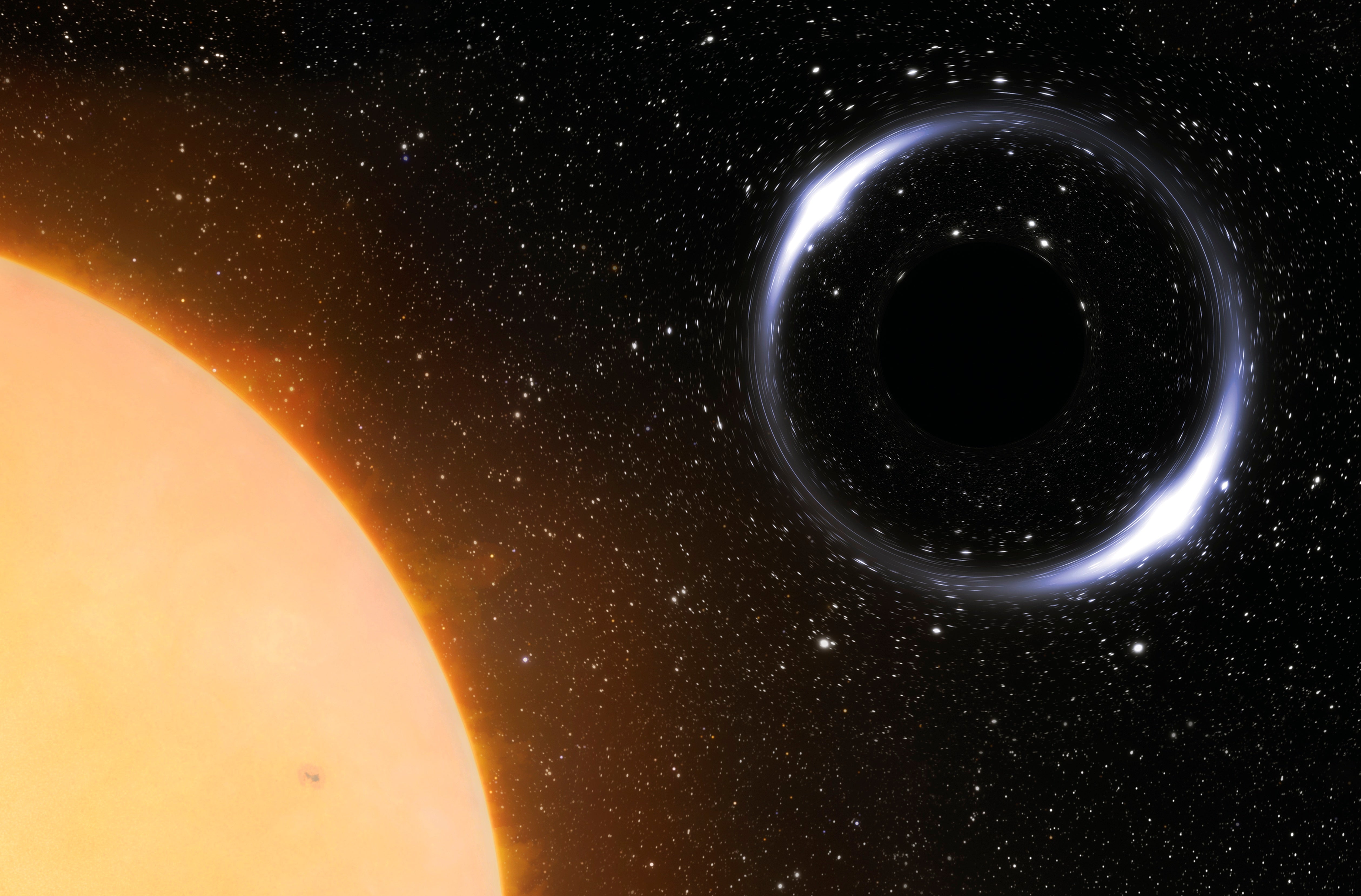When Dutch astronomer Christiaan Huygens published his detailed sketches and drawings of the Orion Nebula’s (M42) central parts (now known as Huygens’ Region) in 1659, other observers began to follow suit.
Over the next two centuries, astronomers compared the published results and pondered whether the nebula underwent periodic changes. Alternatively, they wondered: Did the differences between the drawings actually reflect more mundane issues, such as the vagaries of Earth’s atmosphere, differing telescope sizes, magnifications used, and the artist’s impression?
Over the next two centuries, astronomers compared the published results and pondered whether the nebula underwent periodic changes. Alternatively, they wondered: Did the differences between the drawings actually reflect more mundane issues, such as the vagaries of Earth’s atmosphere, differing telescope sizes, magnifications used, and the artist’s impression?
While we now know the latter is true, you might find it fun and enlightening to make your own visual study of the region over time, using the same aperture and magnification. The differences, no matter how subtle, might surprise you.
The Fish’s Mouth
I suggest you start your journey by examining one of the more dramatic features of the nebula — a region popularly known as the Fish’s Mouth. Easily distinguishable as a dark bay east of the famous Trapezium of stars, it received the label Sinus magnus (Great gulf) from British astronomer William Herschel.
One fascinating contrast effect occurs if you concentrate your gaze directly on Sinus magnus. With time, a powerfully dark image appears. It is a mighty silhouette that flows away from an hourglass-shaped light just northeast of the Trapezium (the Fish’s Eye) and runs between the Fish’s bright jaws. When Herschel observed this gulf with a 10-foot reflector November 11, 1776, he saw it as “a total darkness.”
I suggest you start your journey by examining one of the more dramatic features of the nebula — a region popularly known as the Fish’s Mouth. Easily distinguishable as a dark bay east of the famous Trapezium of stars, it received the label Sinus magnus (Great gulf) from British astronomer William Herschel.
One fascinating contrast effect occurs if you concentrate your gaze directly on Sinus magnus. With time, a powerfully dark image appears. It is a mighty silhouette that flows away from an hourglass-shaped light just northeast of the Trapezium (the Fish’s Eye) and runs between the Fish’s bright jaws. When Herschel observed this gulf with a 10-foot reflector November 11, 1776, he saw it as “a total darkness.”
Sinus magnus remained a featureless cavity until January 25, 1797, when German astronomer Johann Schröter ob-served, and subsequently drew, two streaks of light crossing the bay. About three weeks later, however, he could make out only the brighter northern point of the easternmost streak. By December 10, 1797, the eastern streak returned as a “faint trace” while the other feature never came back.
Curiously, no other observers are known to have spotted these streaks again until 1857, when Italian astronomer Angelo Secchi noted, “The bottom of the gulf is separated from the rest by the bridge of Schroeter, the variability of which is, it seems to me, indubitable.” Secchi saw the streak as “a true bridge formed by light veils of mist that traverse the gulf. … I find but a very faint trace of the other branches that may be seen as promontories in the gulf following the principal bridge, and that now have become brighter. But a little mist in the atmosphere causes all these minute details to disappear.”
On January 15, 1858, Secchi observed Sinus magnus and was surprised to discover nebulosity within it in the shape of the “figure 8” on its side (with south up), with Schröter’s bridge separating the figure’s hollows.
The next decade, he saw this aspect again. A new bridge formed its eastern edge; Secchi made no mention of Schröter’s other bridge. In Secchi’s 1868 drawing, the two bridges stretch across the southern half of the bay and connect to a fainter spit of mist jutting from the northern part of the Fish’s mouth.
All these sightings continued to mystify observers until the advent of photography, which resolved the age-old visual dilemma. Now it’s your turn to test your vision and see how Earth’s atmosphere plays tricks on the eye. Remember to keep good records, and send results to someara@interpac.net.
On January 15, 1858, Secchi observed Sinus magnus and was surprised to discover nebulosity within it in the shape of the “figure 8” on its side (with south up), with Schröter’s bridge separating the figure’s hollows.
The next decade, he saw this aspect again. A new bridge formed its eastern edge; Secchi made no mention of Schröter’s other bridge. In Secchi’s 1868 drawing, the two bridges stretch across the southern half of the bay and connect to a fainter spit of mist jutting from the northern part of the Fish’s mouth.
All these sightings continued to mystify observers until the advent of photography, which resolved the age-old visual dilemma. Now it’s your turn to test your vision and see how Earth’s atmosphere plays tricks on the eye. Remember to keep good records, and send results to someara@interpac.net.


